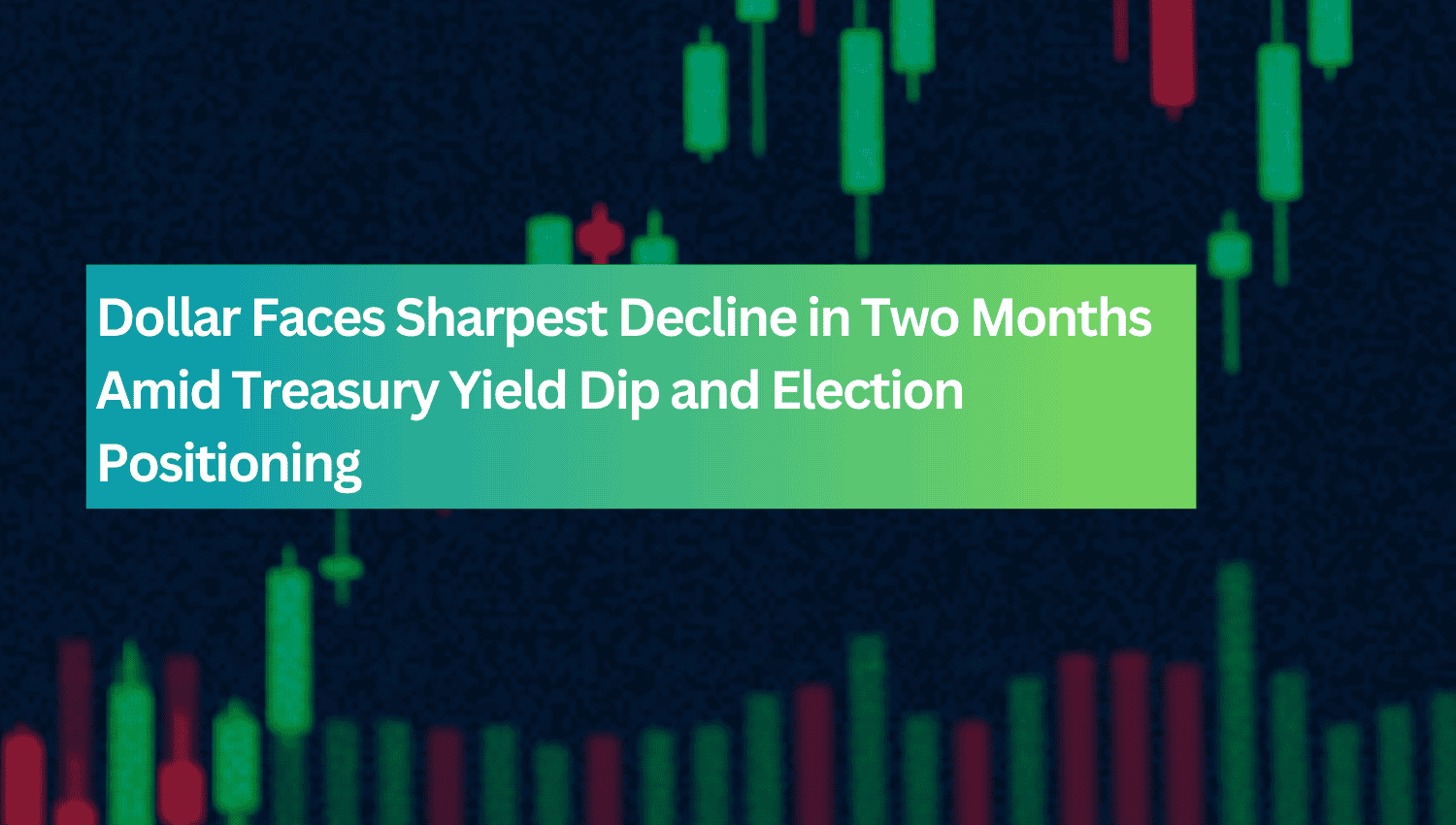Dollar Weakens on Lower Treasury Yields and Pre-Election Position Adjustments

Dollar Weakens on Lower Treasury Yields and Pre-Election Position Adjustments
The U.S. dollar index is poised for its largest decline in two months as Treasury yields fell and investors pared back positions linked to the “Trump trade” ahead of Tuesday’s U.S. presidential election. This adjustment comes as weekend polls showed Democratic candidate Kamala Harris taking a lead in Iowa, a pivotal swing state. U.S. data indicated a modest October boost in auto sales, suggesting resilience in consumer demand, though investor attention is turning to the upcoming FOMC policy decision for further guidance on interest rates.
Euro Rises on Upbeat Eurozone Manufacturing Data
The euro advanced to a two-week high, supported by HCOB’s final eurozone manufacturing PMI for October, which rose to 46.0, suggesting signs of economic stabilization in the region. In Germany, focus will be on the strength of the three-party coalition as it meets on Wednesday to assess a variety of economic policies, with potential implications for broader euro sentiment.
Pound Under Pressure as Bank of England Rate Cut Looms
The British pound underperformed as expectations of a Bank of England rate cut on Thursday weighed on sentiment. While the pound managed a modest gain, traders remain cautious, awaiting the Bank’s decision amid mounting fiscal pressures in the U.K.
Commodities: Oil Surges on OPEC+ Delay, Gold Gains Ahead of U.S. Election
Oil prices climbed over 2% after OPEC+ announced a delay in its scheduled output increase, boosting market confidence in a steady supply framework. Gold edged higher as investors sought safe-haven assets in advance of the U.S. election. Meanwhile, Treasury yields dipped by 2 to 6 basis points, flattening the yield curve, as markets adopted a defensive stance. The S&P 500 saw a slight decline, led by weakness in the financial sector.
Market Outlook: Heightened Caution Ahead of U.S. Election, BoE, and FOMC Decisions
Investor sentiment remains cautious as key events—U.S. election results, the Bank of England’s rate decision, and the FOMC meeting—loom. Treasury yields are expected to stay under pressure with continued uncertainty around the election outcome, prompting investors to adopt defensive positioning. In the eurozone, economic stability will be closely watched as Germany’s coalition government deliberates on fiscal measures that could impact broader euro sentiment. The pound’s direction hinges on the Bank of England’s upcoming policy decision; a rate cut could weigh on sterling, while a neutral approach may offer some support.
Commodity markets are likely to react to OPEC+ decisions and demand expectations, with oil prices maintaining an upward bias if output increases remain delayed. Gold may benefit from safe-haven flows linked to election risks, while copper could see support if dollar weakness persists.
Currency Market Moves: Euro Gains on Strong Data, Yen Strengthens on Dollar Weakness
In currency markets, EUR/USD rose by 0.49%, supported by upbeat eurozone manufacturing data and a broadly weaker dollar. USD/JPY dropped by 0.58% as the yen strengthened amid the dollar’s retreat and lower Treasury yields. GBP/USD climbed 0.24% but remains vulnerable to potential volatility from the Bank of England’s rate decision. AUD/USD advanced by 0.43%, benefiting from firming commodity prices and a weaker dollar, while AUD/JPY fell 0.09% due to cautious risk sentiment. Cross-pair movements reflected these dynamics, with EUR/JPY and GBP/JPY down by 0.08% and 0.34%, respectively, as the yen gained ground.
Outlook: Dollar Under Pressure, Euro Eyes Stability, Pound Awaits BoE Decision
The dollar may remain pressured if Treasury yields stay low and election-related uncertainty persists. The euro could retain its strength if eurozone data stabilizes and Germany’s coalition reaches supportive fiscal agreements. The pound’s path is mixed, with the Bank of England’s rate decision expected to introduce volatility—an easing stance could push it lower, while a neutral approach might lend support. The yen is likely to benefit from any extended dollar weakness, while the Australian dollar’s performance depends on commodity trends and China’s economic signals. Currency markets are poised for a volatile week, as political events and central bank policies converge, with investors closely monitoring each development.
4o

